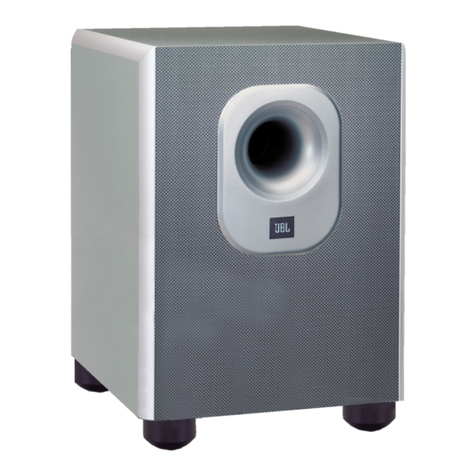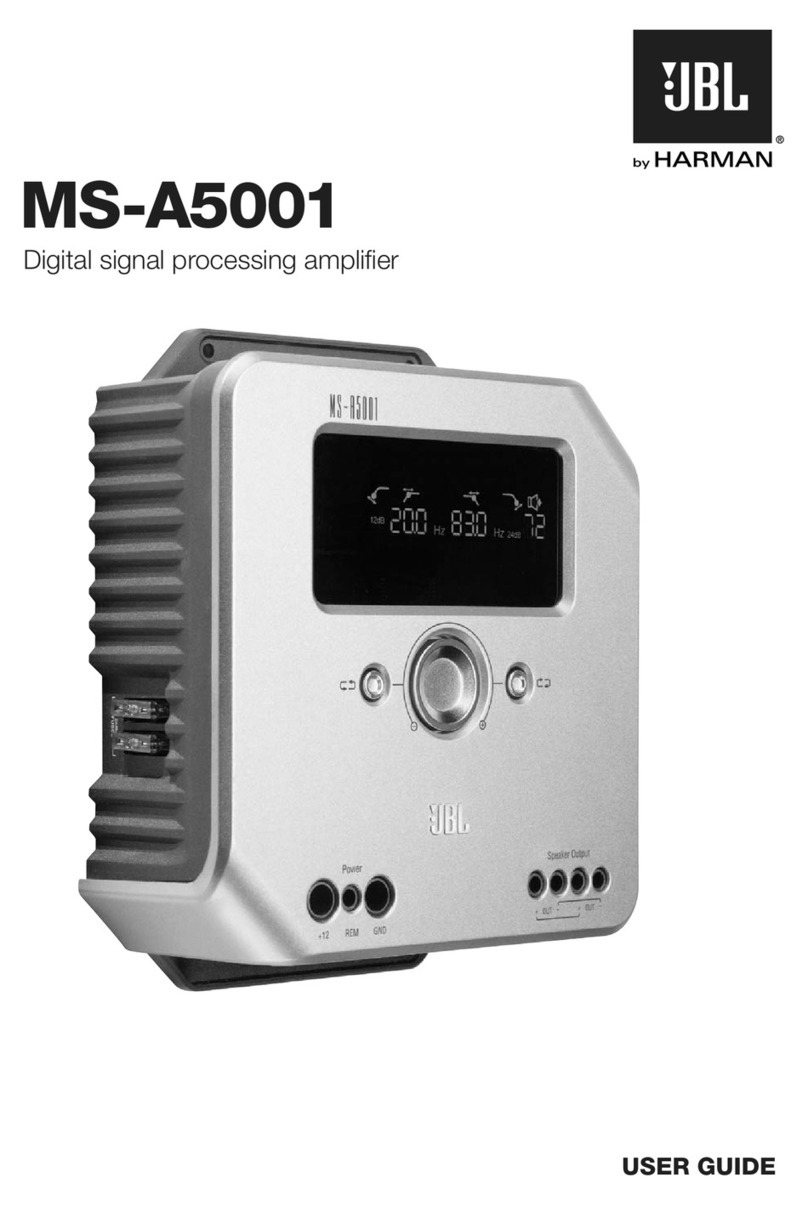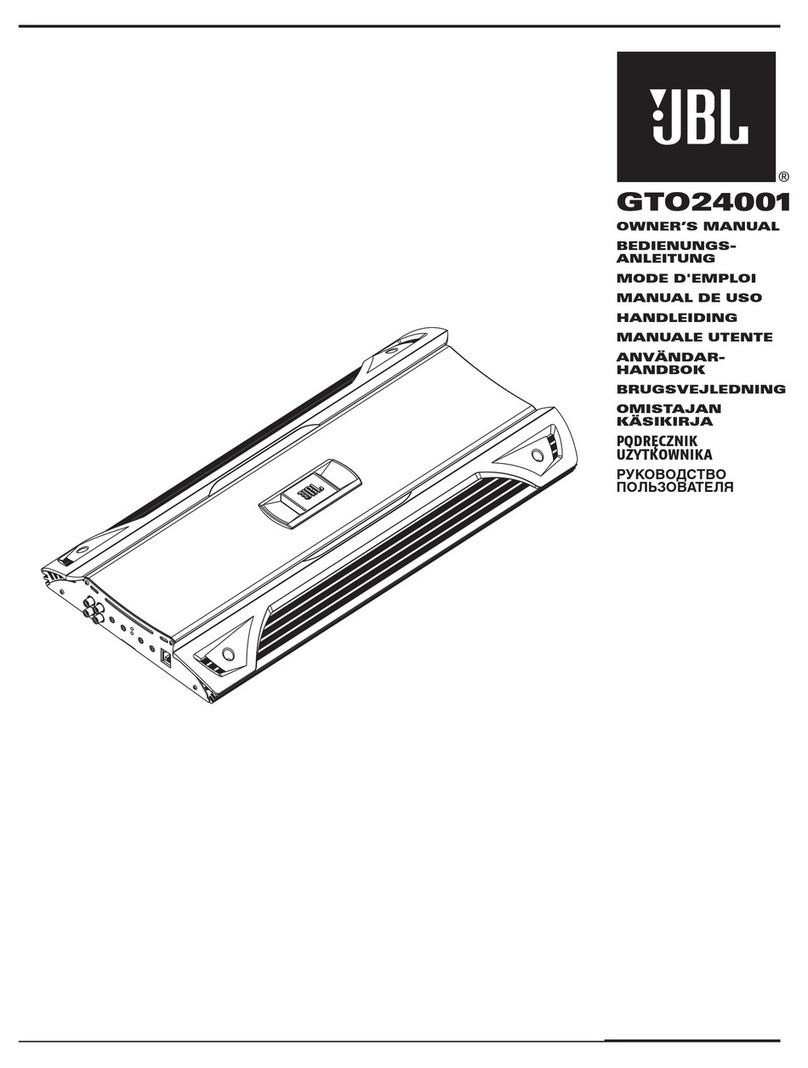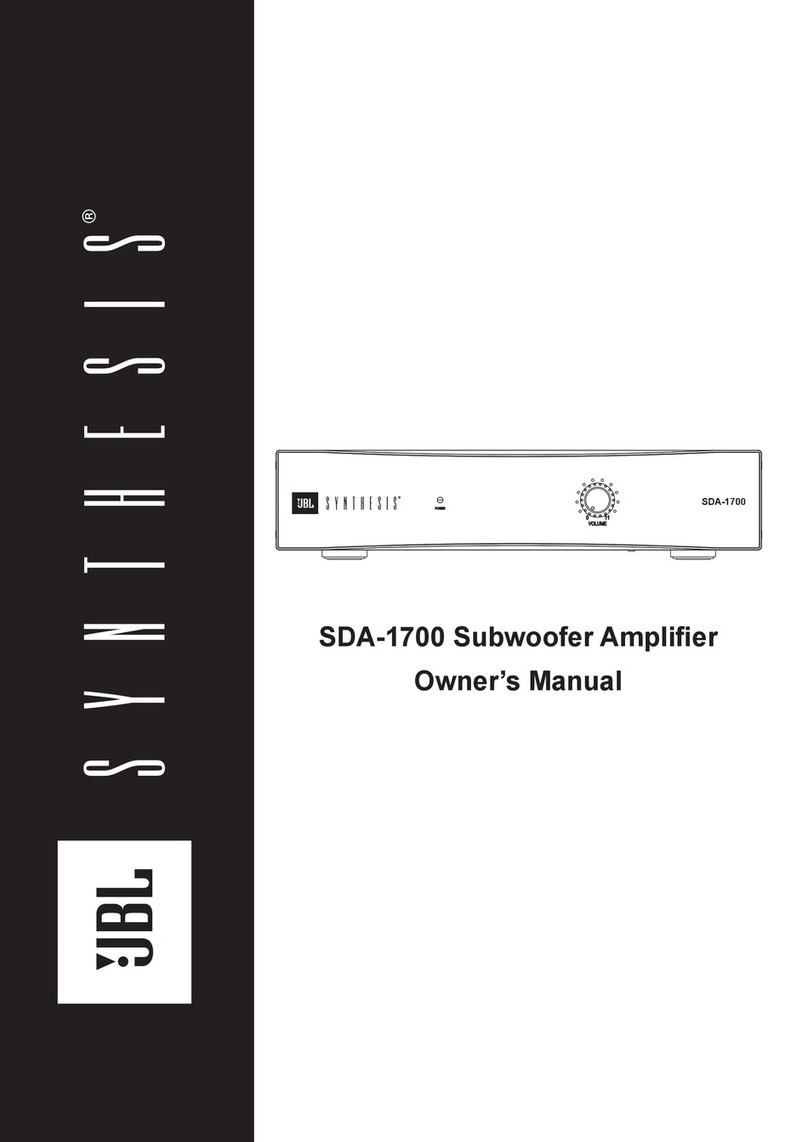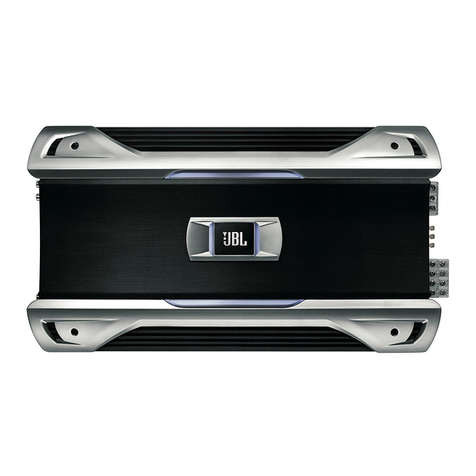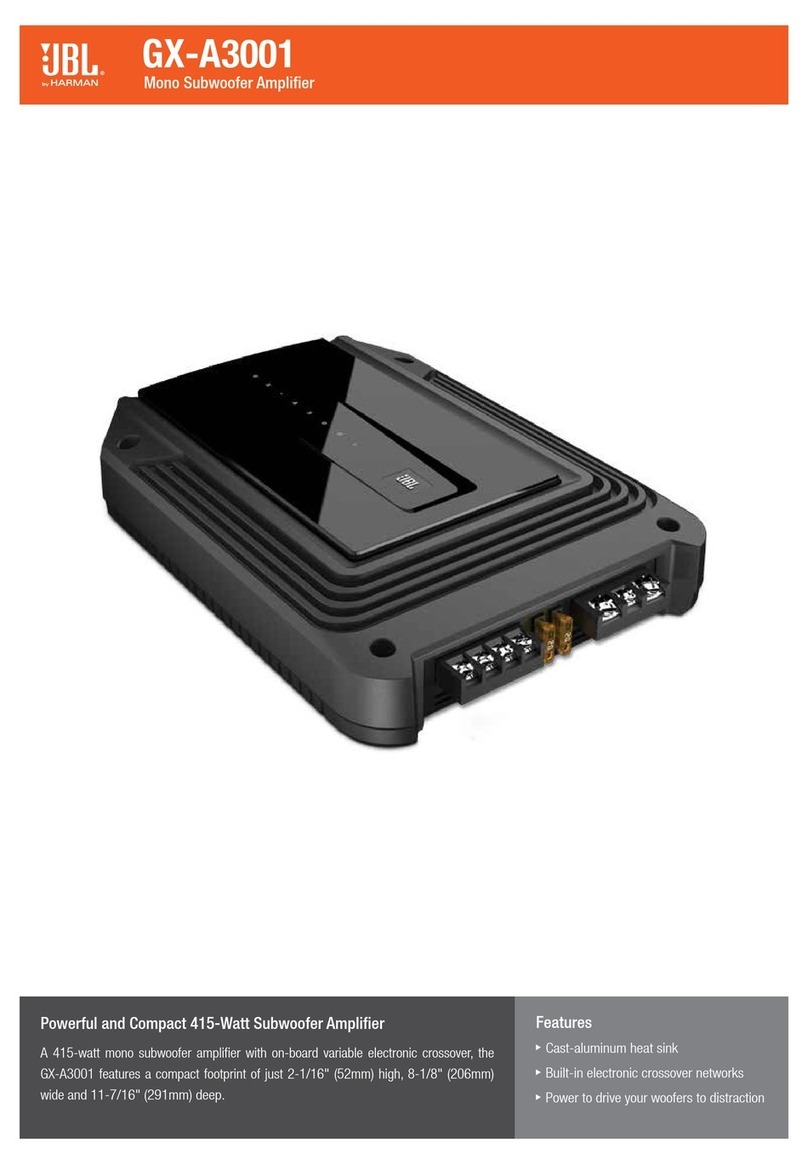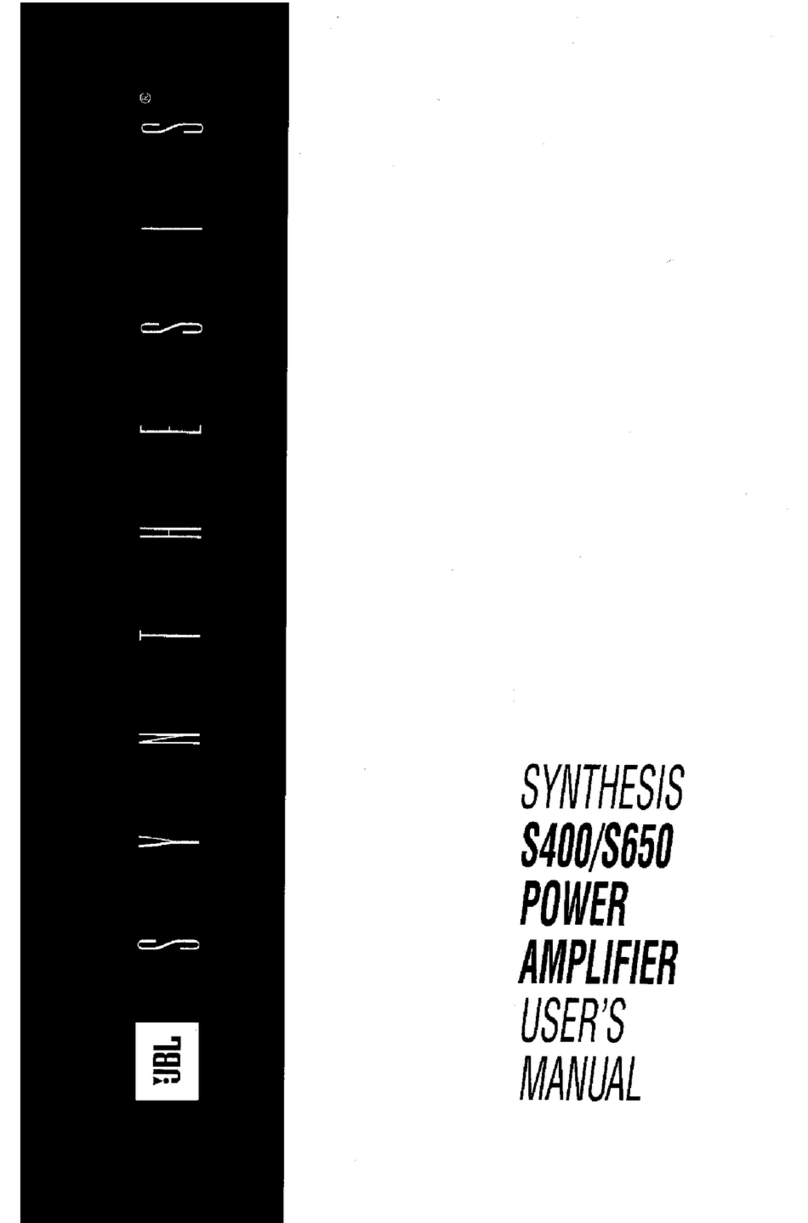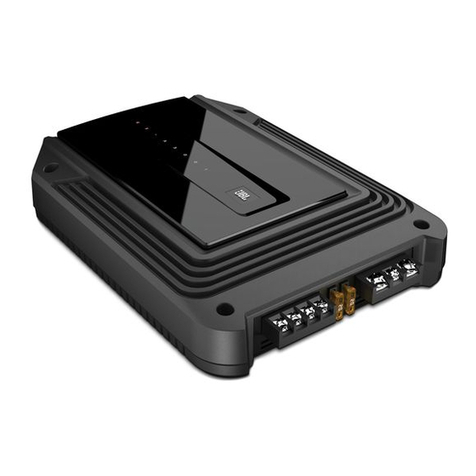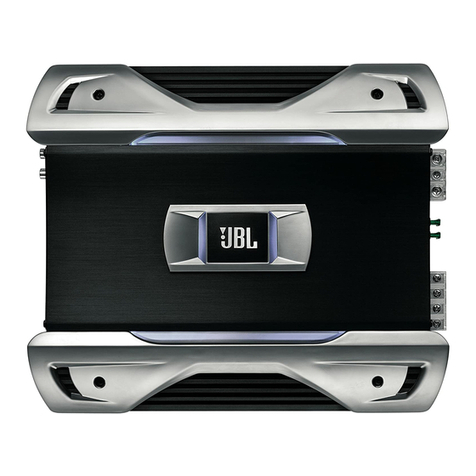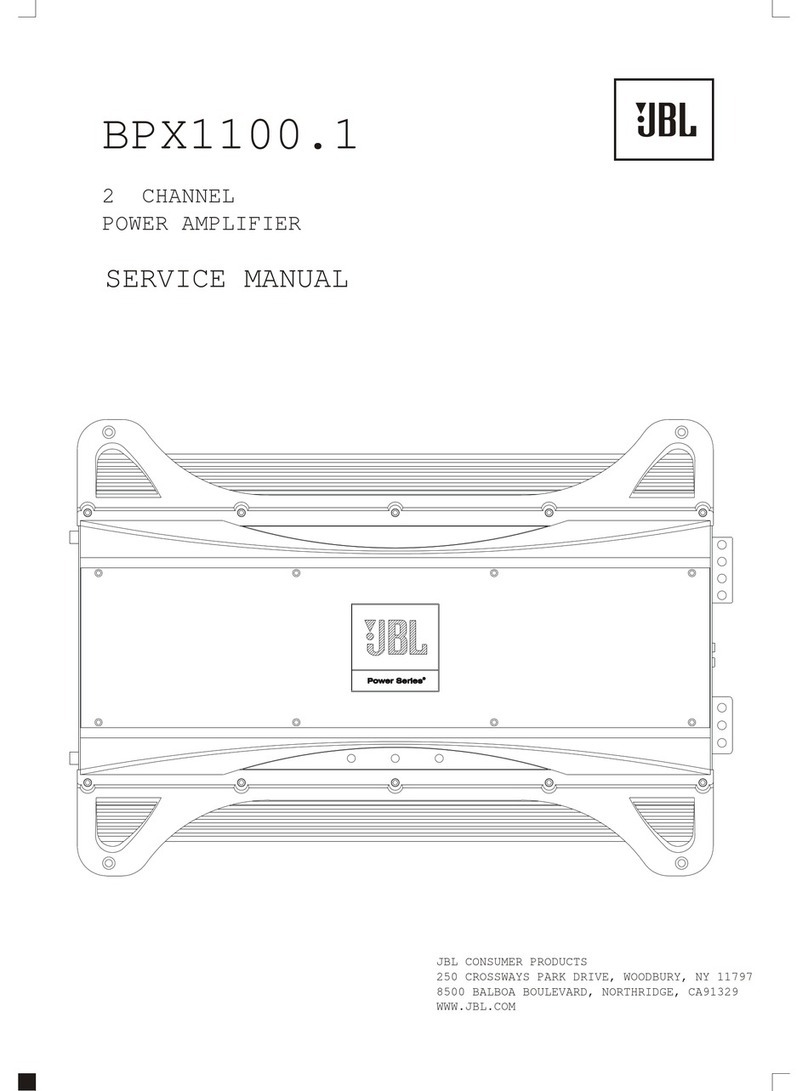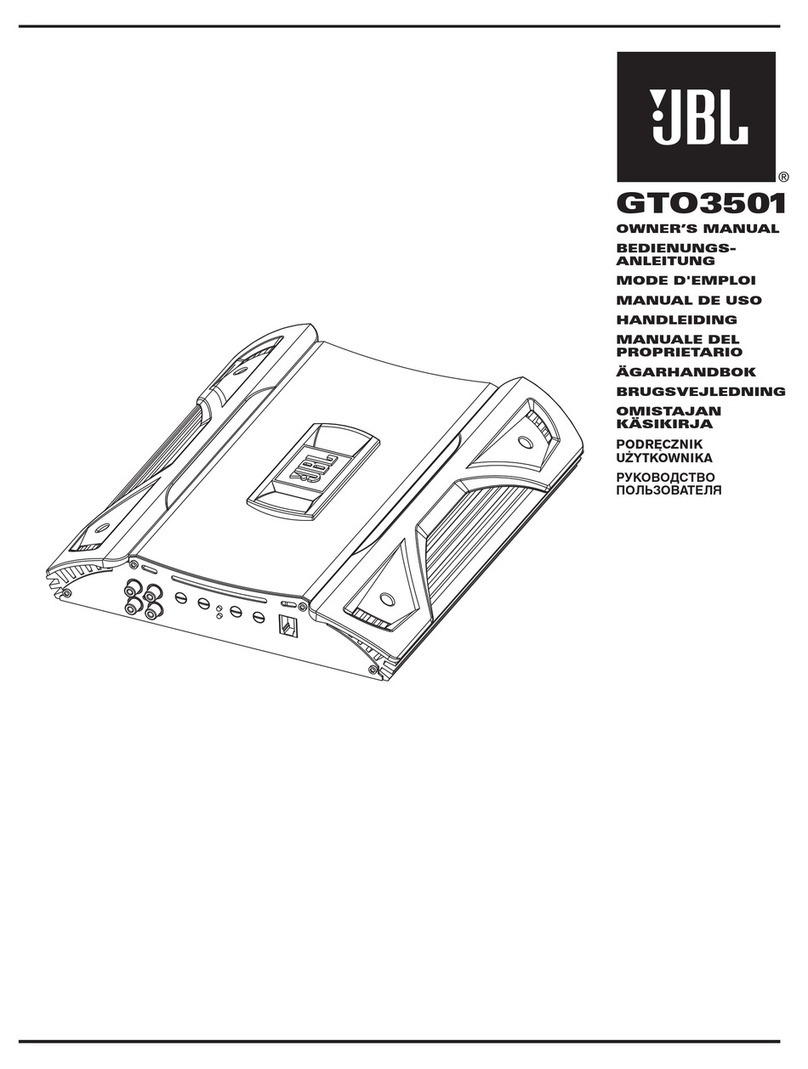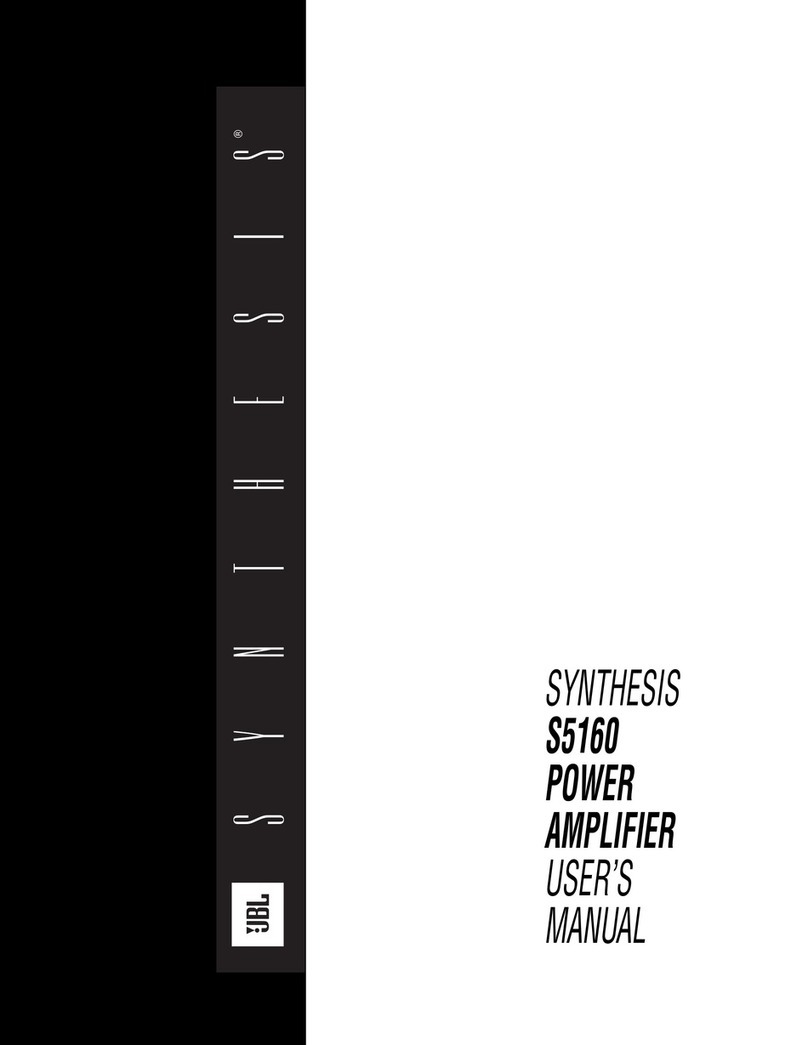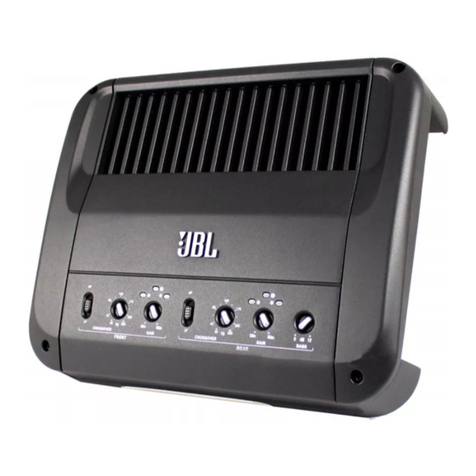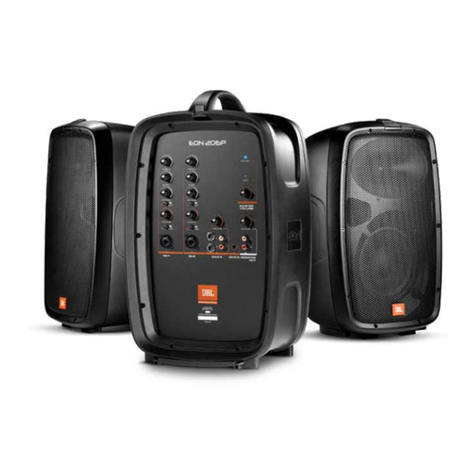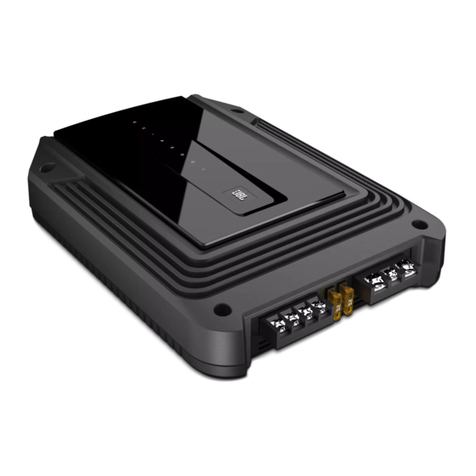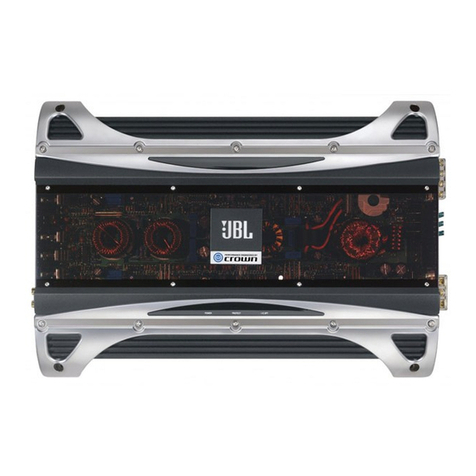
MS-A1004FEATURES
oInput-Level Control
Used
to
match the input sensitiv-
ity
to
the signal voltage for proper
analog-to-digital conversion. See
"Setting the Input Level, and En-
abling or Disabling Signal-Sensing
Tum-On" for details. DO NOT use
these controls for setting the relative
output level of amplifier channels!
•Input Signal Selector
Lo/Hi/Hi2 sets the input
voltage and impedance range. See
"Setting the Input Level, and
Enabling
or
Disabling Signal-Sens-
ing Tum-On" and "The factory-
installed system
in
my car shows a
'speaker disconnected' message,
or
it fails to play when aspeaker
is
disconnected
or
when
an
amplifier
is
connected
to
its output. What
should Ido?" for details.
•Audio Inputs
Use RCA audio cables for preamp-
level connections
or
the included
RCA-to-bare-wire adapters for
speaker-level input connections.
•Summed Pass-Through Outputs
Input channels 1and 3are
com-
bined and sent
to
one output.
Inputs 2and 4are combined and
sent to the other output.
oOn
board
Fuses
2 x 30A
ATC
type.
"Channels 1and 2Display Panel
Displays the settings of channels 1
and 2
of
the amplifier.
oChannels 3and 4Display Panel
Displays the settings of channels 3
and 4ofthe amplifier.
oUser Controls
Allows adjustment of amplifier set-
tings. See "MS-A1
004
User
Controls" for details.
CD
+12V Power Input
Connect
to
vehicle battery with a
60A fuse within 18 inches (45.7cm)
ofthe positive battery terminal.
dV
Remote Turn-On Input
Connect switched
+5V
to
+
12V.
NOTE: The MS-A1004 also in-
cludes signal-sensing tum-on.
You
may choose the tum-on method
during setup. See "How does the
digital input mixer work?" and "MS-
A1004 Connections" for details.
•Chassis Ground Input
Connect
to
apaint-free spot on the
vehicle chassis.
4B
Speaker Outputs
3
MS-A1004
DIGITALSIGNAL PROCESSING
AMPUFIER
PLEASE READ
THIS
BEFOREYOU BEGIN!
JBL
®MS Series amplifiers include many features not found on conventional car audio amplifiers. Also, the setup procedure
for MS Series amplifiers
is
different from that of conventional car audio amplifiers. The following overview of features and
functions will help you plan agreat system and make the best use ofthe MS-A1004
's
innovative features.
About the digital signal processing (DSP) included
in
MS
Series amplifiers:
All
ofthe signal processing
in
MS Series amplifiers is digital. Digital signal processing, along with the intuitive controls and
display included
in
MS Series amplifiers, makes precise setup
easy.
Only the input-level controls are analog.
Will my settings be lost if Idisconnect the amplifier or the car's battery?
No.
All
ofthe DSP settings are stored
in
nonvolatile memory, so no settings will be lost
if
power
is
removed from the amplifier.
Why are the input-level controls analog?
In
order
to
provide the best signal-to-noise ratio and to maximize the resolution ofthe digital-to-analog conversion, the
maximum input signal level
to
the analog-to-digital (ND) converters must be precisely set. This must be an analog control.
The included setup CD and the procedure described
in
this manual make setting the
level
simple and precise. Once the
input-level control
is
set, the control should not be used
to
"tune" the system. Use the digital output-level control
to
adjust the
relative level between amplifier channels
to
tune the system.
FCC REGULATIONS
Caution:
Changes
or
modifications not expressly approved by the party responsible for compliance could void the user's authority
to
operate the equipment.
Compliance statement:
1:
This device
is
verified
to
comply with Part 15 of the FCC Rules. Operation subject to the following
two
conditions:
(1)
this
device may not cause harmful interference, and
(2)
this device must accept any interference received, including interference
that may cause undesired operation.
2:
This equipment has been tested and found
to
comply with the limits for aClass Bdigital device, pursuant to Part
15
ofthe
FCC Rules. These limits are designed
to
provide reasonable protectiol9 against harmful interference
in
aresidential installation.
This equipment generates, uses and can radiate radio frequency energy and, if not installed and used
in
accordance with the
instructions, may cause harmful interference to radio communications. However,there
is
no guarantee that interference will not
occur in aparticular installation.
If
this equipment does cause harmful interference to radio
or
television reception, which can
be determined by tuming the equipment off and on, the user
is
encouraged
to
try to correct the interference by one
or
more of
the following measures:
•Reorient or relocate the receiving antenna.
•Increase the separation between the equipment and receiver.
•Connect the equipment into
an
outlet on acircuit different from that to which the receiver
is
connected.
•Consult the dealer
or
an experienced radiolTV technician for help.

